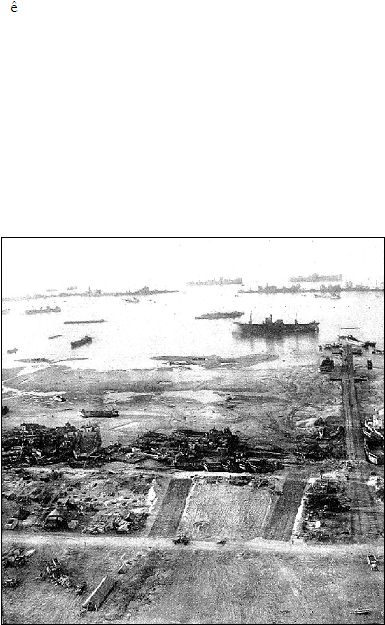
hindering the landing. All initial objectives of both this division and the assaulting 4th were
quickly reached, and contact between the two forces was established in almost precisely the
same manner as was planned and rehearsed back in England. By nightfall, it was apparent that
the initial hold on the peninsula was about 4,000 yards wide and up to 10,000 yards deep, and
that our troops were securely ashore.
On the following day, firm contact was established with elements of the 82d Airborne
Division at Ste. M
re-Eglise. Enemy guns located north and south of the beachhead fired
intermittently to harass operations on the beach. In spite of a heavy counterattack by the enemy,
our troops continued to expand and consolidate their holdings, and by the end of their second day
on the continent they had securely established their beachhead, thus completing the first step in
the liberation of France and Europe.
Reinforcements continued to flow ashore, and soon the 90th and 9th Infantry Divisions
joined the battle. The enemy had retired west of the Merderet River, but not without making our
gains as costly as possible. He persistently launched small counterattacks late every evening in a
series of attempts to regain ground lost during the day, but every one was decisively beaten off.
He still held Carentan, preventing the juncture of VII Corps with V Corps. His defense in the
fixed fortifications along the coast was tenacious, and our advance was slow.
This aerial view of part of the beach area shows an artificial breakwater made of sunken ships.
Other craft, “dried out” by the receding tide will float again when the water rises.